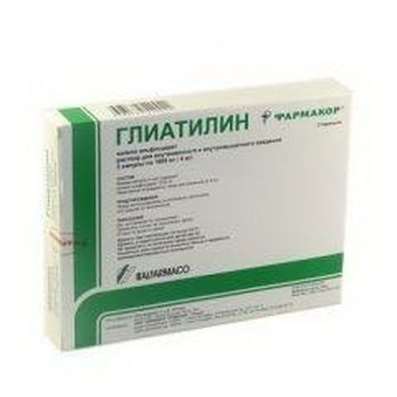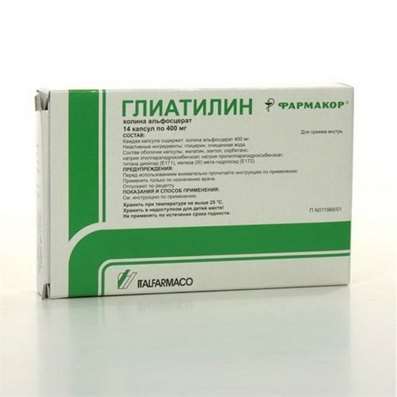Instruction for use: Terfenadine
I want this, give me price
The Latin name of the substance Terfenadine
Terfenadinum (genus. Terfenadini)
Chemical name
Α- [4- (1,1-Dimethylethyl) phenyl] -4- (hydroxydiphenylmethyl) -1-piperidinebutanol
Gross formula
C32H41NO2
Pharmacological group:
H1-Antihistamines
The nosological classification (ICD-10)
H10.1 Acute atopic conjunctivitis: Allergic conjunctivitis; Allergic eye diseases; Allergic conjunctivitis; Allergic conjunctivitis caused by chemical and physical factors; Allergic rhinoconjunctivitis; Allergic inflammation of the eyes; Spring Qatar; Spring keratitis; Spring conjunctivitis; Conjunctivitis allergic; Year-round allergic conjunctivitis; Exacerbation of pollinosis in the form of rhinoconjunctival syndrome; Acute allergic keratoconjunctivitis; Acute allergic conjunctivitis; Superficial bacterial infection of the eyes; Rhinoconjunctivitis; Seasonal allergic conjunctivitis; Seasonal conjunctivitis; SENSORY; Chronic allergic keratoconjunctivitis; Chronic allergic conjunctivitis
J30 Vasomotor and allergic rhinitis: Allergic rhinopathy; Allergic rhinosinusopathy; Allergic diseases of the upper respiratory tract; Allergic rhinitis; Allergic rhinitis seasonal; Vasomotor runny nose; Prolonged allergic rhinitis; All-year-round allergic rhinitis; All-year allergic rhinitis; Year-round or seasonal allergic rhinitis; All-the-year-round rhinitis of an allergic nature; Rhinitis vasomotor allergic; Exacerbation of pollinosis in the form of rhinoconjunctival syndrome; Acute allergic rhinitis; Edema of the nasal mucosa; Edema of the nasal mucosa; Edema of the mucous membrane of the nasal cavity; Swelling of the nasal mucosa; Swelling of the nasal mucosa; Pollinosis; Permanent allergic rhinitis; Rhinoconjunctivitis; Rhinosinusitis; Rhinosinusopathy; Seasonal allergic rhinitis; Seasonal allergic rhinitis; Hay rhinitis; Chronic allergic rhinitis; Allergic diseases of the respiratory tract
J45 Asthma: Asthma of physical effort; Asthmatic conditions; Bronchial asthma; Bronchial asthma of light course; Bronchial asthma with difficulty in sputum discharge; Bronchial asthma of severe course; Bronchial asthma physical effort; Hypersecretory asthma; The hormone-dependent form of bronchial asthma; Curbing asthma attacks with bronchial asthma; Non-allergic bronchial asthma; Night Asthma; Exacerbation of bronchial asthma; Attack of bronchial asthma; Endogenous forms of asthma; Night attacks of asthma; Cough with bronchial asthma
L20 Atopic dermatitis: Allergic diseases of the skin; Allergic skin disease noninfectious etiology; Allergic skin disease etiology nemikrobnoy; Allergic skin diseases; Allergic skin lesions; Allergic reactions on the skin; atopic dermatitis; Allergic dermatosis; Allergic diathesis; Allergic itching dermatosis; Allergic skin disease; Allergic skin irritation; allergic Dermatitis; atopic Dermatitis; allergic dermatoses; exudative diathesis; Itchy atopic eczema Itchy allergic dermatosis; Allergic skin disease; Cutaneous allergic reaction to drugs and chemicals; Cutaneous reactions to medications; Skin and allergic disease; Acute eczema; common neurodermatitis; Chronic atopic dermatitis; Exudative diathesis
L27 Dermatitis due to substances taken internally
L29 Itching: Itching with partial obstruction of the biliary tract; Dermatitis itchy; Dermatosis with persistent itching; Other itching dermatoses; Itching dermatoses; Itching allergic dermatosis; Itching dermatitis; Itching dermatosis; Itching itch; Excruciating itching; Severe itching; Endogenous itching; Skin itching with dermatosis; Restricted itchy dermatitis; Itching of the skin; Itchy scalp; Itching eczema
L30 Other dermatitis: Non-aboriginal dermatitis
L50 Urticaria: Idiopathic chronic urticarial; Injury Urticaria; Chronic urticarial; Hives of the newborn
T78.3 Angioedema: Edema Quincke; Laryngeal exacerbation with angioneurotic edema; Recurrent angioedema; Allergic edema; Recurrent swelling of Quincy
T78.4 Unspecified Allergy: Allergic reactions to insulin; Allergic reactions to insect stings; Allergic reactions similar to systemic lupus erythematosus; Allergic diseases; Allergic diseases of mucous membranes; Allergic diseases and conditions resulting from increased release of histamine; Allergic diseases of mucous membranes; Allergic symptoms; Allergic symptoms in the mucous membranes; Allergic reactions; Allergic reactions caused by insect bites; Allergic reactions; Allergic conditions; Allergic laryngeal edema; allergopathy; allergic conditions; Allergy; House dust allergy; Anaphylaxis; Cutaneous reactions to medications; Skin reaction to insect stings; Cosmetic allergy; Drug allergy; Acute allergic reaction; Laryngeal edema allergic genesis and background radiation; Food and drug allergy
W57 Bite or sting with a non-toxic insect and other non-venous arthropods: An allergic reaction to insect bites; Skin reaction after insect bite; Reactions to insect bites; Mosquito bite; Bite of bloodsucking insects; A bite of an insect; The bite of the wasp
Y40-Y59 Drugs, medicines and biological substances that cause adverse reactions during therapeutic use
CAS Code
50679-08-8
Characteristics of the substance Terfenadine
The piperidine derivative. White or off-white crystalline powder. Poorly soluble in water, easily soluble in chloroform, soluble in alcohol.
Pharmacology
Pharmacological action - anti-allergic, antihistamine.
Selectively blocks peripheral histamine H1 receptors, prevents spasms of smooth muscle caused by histamine, incl. Bronchoconstriction in patients with asthma, the expansion of capillaries and increase their permeability, the development of angioedema, erythema, itching. The effect manifests itself 1-2 hours after ingestion, reaches a maximum of 3-4 hours and lasts more than 12 hours. With allergic rhinitis it facilitates and reduces the frequency of sneezing, rhinorrhea, pruritus and lachrymation. Has a weak cholinolytic effect, the ability to block the potassium channels of cardiomyocytes, does not exert a depressant effect on the central nervous system. Reduces the severity of bronchospasm caused by physical exertion and hyperventilation of the lungs. An increase in the level of terfenadine in the blood (with liver diseases, simultaneous use of other medications, overdose, etc.) may be accompanied by prolongation of the QT interval and the development of complications from the heart.
In experimental studies, there was no evidence of a carcinogenic and mutagenic effect, as well as an effect on fertility. In doses much higher than those recommended for humans, causes fetal malformations in rats.
After oral intake about 70% is absorbed (absorption is not dependent on food intake); Determined in blood plasma after 30 minutes. Tmax - 1 hour. It binds to plasma proteins by 97% (active metabolite - by 70%). It is actively metabolized (99%) with the participation of the specific isoenzyme CYP3A4 of the cytochrome P450 system already during the "first passage" through the liver with the formation of two main metabolites, an active carboxylic acid analog (possesses 1/3 of terfenadine activity) and an inactive dealkylated derivative. After a single oral intake of a dose of 60 mg Cmax active metabolite in plasma is achieved after 2.5 hours and is 263 ng / ml, T1 / 2 distribution - 3-4 hours. The therapeutic level of the drug and its active metabolite in plasma persists for 12- 24 hours. Elimination of the active metabolite is biphasic: T1 / 2 of the initial phase is 3.5 hours, final - 6 hours. 60% of the accepted dose is excreted with feces (50% in the form of active metabolite, 2% in unchanged form, In the form of unidentified metabolites) and about 40% by kidneys (16% - active metabolite, 12% - des lkilirovanny metabolite and 12%, - unidentifiable derivatives). T1 / 2 terfenadine - 8.5 h. Active metabolite in small amounts is secreted into breast milk. If liver function is impaired, the rate of formation and Cl of the active metabolite decreases, the content of unchanged terfenadine increases in the blood, and if repeated, cumulation is possible. In elderly patients with a dose of 120 mg Cl active metabolite can decrease by 25%.
Application of the substance Terfenadine
Seasonal allergic rhinitis, allergic conjunctivitis, chronic idiopathic urticaria, atopic eczema, contact dermatitis, rash; Itching caused by liver damage; Angioedema; Allergic reactions caused by drugs, food, insect bites; Bronchial asthma and catarrhal diseases (as part of complex therapy), prevention of allergic reactions to the introduction of radiocontrast preparations.
Contraindications
Hypersensitivity, hypokalemia, hypomagnesemia, prolongation of QT interval on ECG, expressed violations of liver function, children's age (tablets - up to 6 years, suspension - up to 3 years).
Restrictions
Pregnancy, breast-feeding.
Application in pregnancy and lactation
Perhaps, if the expected effect of therapy exceeds the potential risk to the fetus and newborn.
Action category for fetus by FDA - C.
Side effects of Terfenadine
From the nervous system and sensory organs: weakness, headache, dizziness, sleep disturbance, drowsiness, nervousness, depression, syncope, convulsions, paresthesia, vision impairment.
From the cardiovascular system and blood: heartbeat, prolongation of the QT interval, ventricular tachyarrhythmia, torsades de pointes, extrasystole, ventricular fibrillation, cardiac arrest, hypotension, hematopoiesis (fatigue or weakness, sore throat, fever, bleeding or hemorrhage ), Thrombocytopenia.
On the part of the intestine: dryness of the oral mucosa, increased appetite, dyspeptic phenomena, nausea, vomiting, abdominal discomfort, changes in stool frequency, cholestasis, jaundice, hepatitis.
On the part of the respiratory system: dryness of the mucous membranes of the nose and throat, cough, sore throat, spasm of the bronchi, nosebleeds.
From the genitourinary system: frequent urination, dysmenorrhea.
From the skin: rash, eczema, thinning hair, alopecia, photosensitization.
Allergic reactions: urticaria, angioedema, anaphylaxis.
Other: tremor, galactorrhea, sweating, increased levels of transaminases.
Interaction
Inhibitors of the cytochrome P450 system can increase the concentration of terfenadine in the blood and cause an elongation of the QT interval with the risk of developing life-threatening ventricular tachyarrhythmias. Macrolides (erythromycin, clarithromycin, josamycin, etc.), inhibitors of neuronal seizure of serotonin (fluvoxamine, citalopram, paroxetine, etc.), mibefradil, and imidazole antifungal agents (ketoconazole, itraconazole, miconazole, etc.) inhibit metabolism and increase plasma levels (Joint application is not recommended). Calcium channel blockers, class I and III antiarrhythmics, antihistamines increasing the QT interval, quinine, trimethoprim, sparfloxacin, cisapride, tricyclic antidepressants, neuroleptics, lithium preparations, HIV protease inhibitors (indinavir, ritonavir, saquinavir, nelfinavir), diuretics, mineralocorticoids , Probucol, antiviral agents (ritonavir, indinavir, etc.) increase the risk of prolongation of the QT interval and increase in toxicity. Does not increase the inhibitory effect of benzodiazepines and alcohol on the central nervous system. Compatible with bronchodilators.
Overdose
Symptoms: dry mouth, nausea, vomiting, headache, dizziness confusion; At a dose of 360 mg and above - hypotension, syncope, ventricular arrhythmias, prolongation of the QT interval, extrasystole, ventricular fibrillation, cardiac arrest.
Treatment: gastric lavage, induction of vomiting, the appointment of absorbents, salt laxatives, monitoring of cardiac activity with QT interval control (at least 24 h), symptomatic and supportive therapy. If necessary - the introduction of fluid (IV), antiarrhythmic drugs that do not extend the interval of QT, hypertensive drugs, oxygen therapy; In the case of severe cardiac arrhythmias, the installation of a pacemaker (temporary). The use of epinephrine and analeptics is not recommended. Hemodialysis is ineffective.
Routes of administration
Inside.
Precautions for the substance Terfenadine
It is not recommended to take the drug before going to bed. Avoid the use of grapefruit juice during treatment (may inhibit metabolism).

 Cart
Cart





